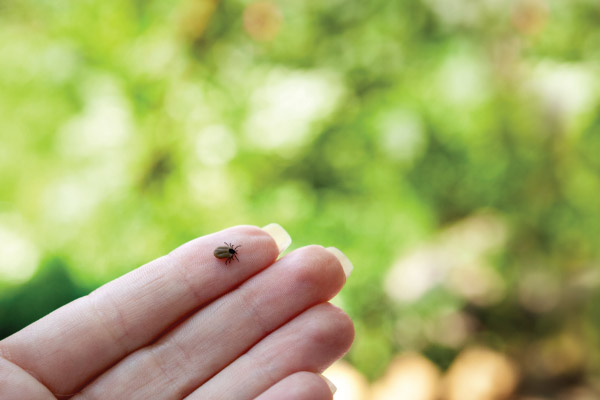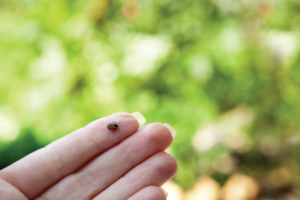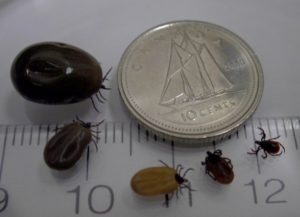
26 Jun What you need to know about ticks

There is a lot of information available these days about ticks and it can be easy to panic. Let’s separate the truth from the fiction.
A disease as old as humanity itself
First of all, did you know that Lyme disease – which can be transmitted by a tick infected with the Borrelia bacteria – is as old as humanity itself. However, it was not until 1977 that it was actually identified among residents of the city of Lyme, Connecticut, hence its name.
Where can we find ticks?
There are about a dozen species of blacklegged ticks in Quebec that carry the bacteria. They can be found in forested areas, shrubs, undergrowth, lawns, gardens and along the roadside, especially in the high-risk areas around the Montérégie and the Eastern Townships.
How does the tick do it?
Unlike the mosquito that stings in less than a minute, the tick – which is about the size of a sesame seed – takes its sweet time. It can stay hooked for three to five days before disappearing under the skin. The way it works is that it bites the skin, creates an opening and pushes its rostrum under the skin. This activity takes several hours. It uses anesthetic to make us insensitive to its bite, so it is very important to inspect ourselves, our kids and pets after a walk in the woods.

Size and colour of female blacklegged ticks in various stages of feeding..
Precautions to take
Here are some ways to protect yourselves when venturing into wooded or forested areas (source : Health Canada):
- Wear light coloured long-sleeved shirts and pants to spot ticks more easily.
- Tuck your shirt into your pants, and pull socks over pant legs.
- Use bug spray containing DEET or Icaridin on skin and clothing (always follow the directions on the label).
- Walk on cleared paths or walkways.
- Shower or bathe within two hours of being outdoors to facilitate a prompt tick check and to remove ticks that have not attached yet.
- Do a daily full-body check for ticks on yourselves and your children, especially in the hair, under the arms, in and around the ears, inside the belly button, behind the knees, between the legs and around the waist.
- If you find an attached tick, remove it with tweezers immediately. Removing it within 24-36 hours can help prevent infection.
- Do a tick check on outdoor gear and pets as they could carry ticks inside the house.
- Put dry outdoor clothes in a dryer on high heat for 10 minutes to kill any remaining ticks. If clothes are damp, additional drying time is needed. If you need to wash your clothes first, hot water is recommended. If the clothes cannot be washed in hot water, tumble dry on low heat for 90 minutes or high heat for 60 minutes.
If a tick is found and removed 24 hours after it is attached to its prey, there is very little chance that it has had time to infect its victim with Borrelia.
Fortunately, the bacteria is very sensitive to antibiotics. If taken in time, it is easy to eliminate it.
This post was inspired by an article published in the June issue of Camping Caravaning (fqcc.ca).




